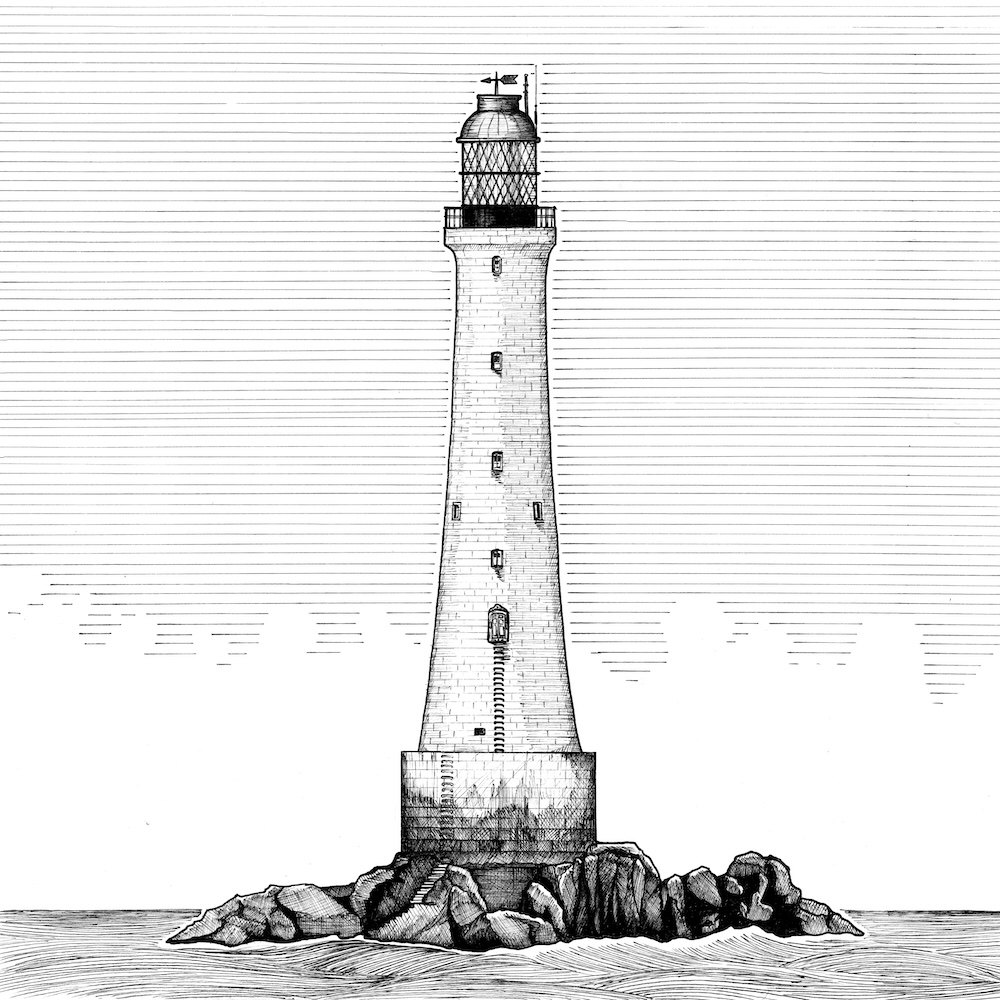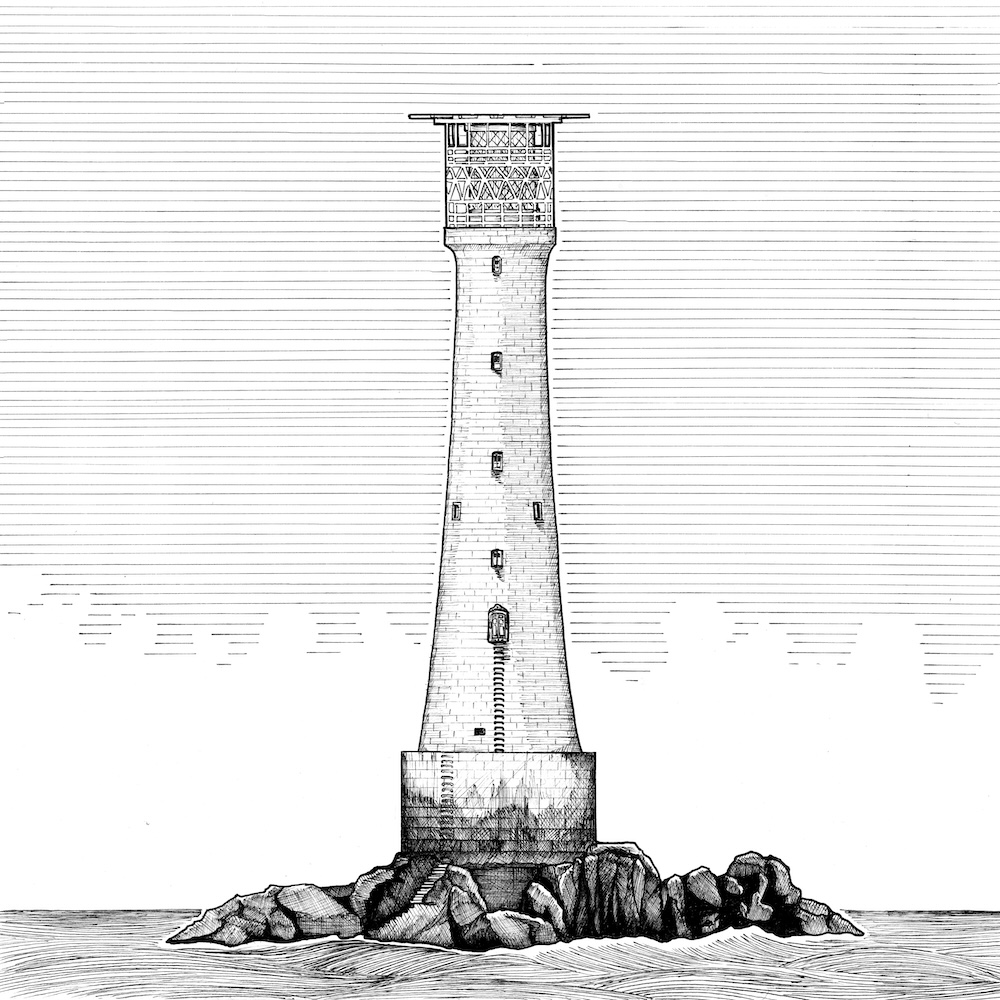As Ben Langworthy draws his way around the UK’s lighthouses, he comes to Bishop Rock: a Scillonian lighthouse matryoshka.

Bishop Rock Lighthouse near the Isles of Scilly is amazing for several reasons. At around 167 feet tall this imposing giant is often called ‘The King of Lighthouses’.
Reports vary slightly but give or take the odd foot here and there, Bishop Rock shares the title of Tallest Lighthouse in the UK with the current Eddystone Lighthouse near Plymouth. Despite the diminutive size and remoteness of this lonely and sea-washed stone, no less than three lighthouses have been built here.
The first was a spindly and spiderlike iron screw-pile structure which, much like Incy Wincy, was washed away before it was ever even lit. Despite this initial failure — or perhaps spurned on by it — two further lighthouses would go on to be built here. Implausible as it might sound for a rock measuring just 46 meters long by 16 meters wide, both of those lighthouses still stand in exactly the positions they were initially built.
This fact may sound more implausible still, or even downright impossible, when you are told that one is hidden from view — after all, a white tower on a sparse rock in the middle of the sea is something that you’re not to likely to miss. That is of course until you think of a matryoshka doll…
The second lighthouse was built from stone by James Walker. It was completed in 1858 but by the 1880s dangerous cracks had begun to appear in the tower. The job of renovating the structure fell to Walker’s successor James Douglass. Douglass was a man who liked things big — really big. He had built Britain’s other tallest lighthouse on the Eddystone Rocks a few years earlier, and, not satisfied with the proportions of the existing building, he settled on a somewhat novel approach to the ‘renovation’ of his forerunner’s work. Instead of repairing the tower or even replacing it, he built an entirely new lighthouse, which encased and entombed its predecessor, completely hiding the old tower from view and raising its height by several feet. Re-lit in 1887, this third lighthouse of Bishop Rock is still in use today.
The eponymous rock from which all three lighthouses have taken their name is a minuscule outcrop; one which, thanks to the tower’s keepers, once held the somewhat lonely record for the smallest inhabited island in the world. With the automation of the light, this island now stands quiet, its circular rooms silent but for the hum of electrical current, the wiring of motors and the crashing waves outside.
This is part of the melancholy of lighthouses in the 21st century: they are buildings which once saw people living for months in close quarters. The professional (and perhaps unwitting) hermits who once called these places home no longer exist, but the rooms in which they lived so much of their everyday lives are carefully preserved, home now to the blinking lights of the silicone brains which superseded them. They are places where both the spirits of the past and the ghost in the machine mingle, largely undisturbed by the outside world.

Top: historial representation of Bishop Rock. Bottom: Bishop Rock in its present configuration, with helipad.